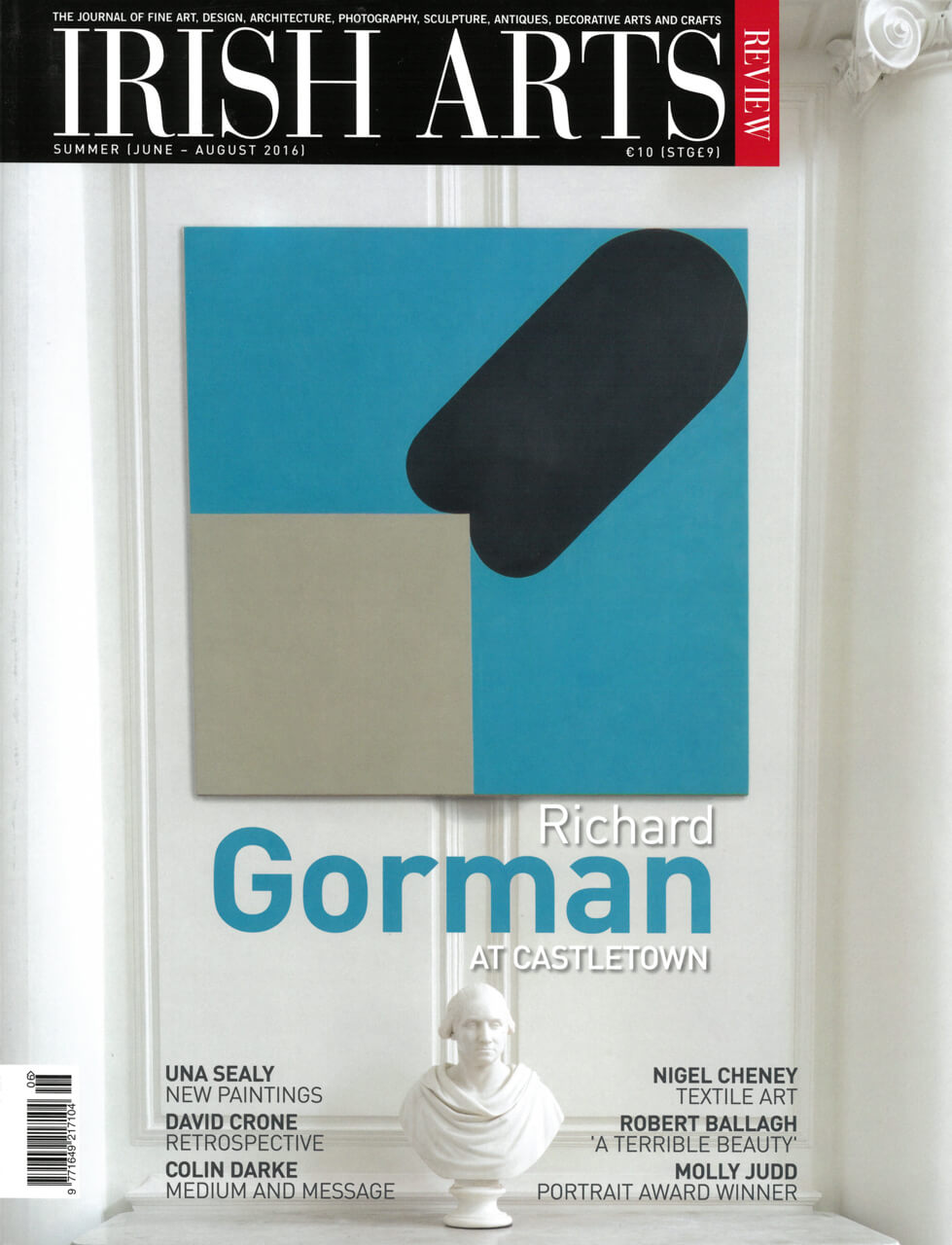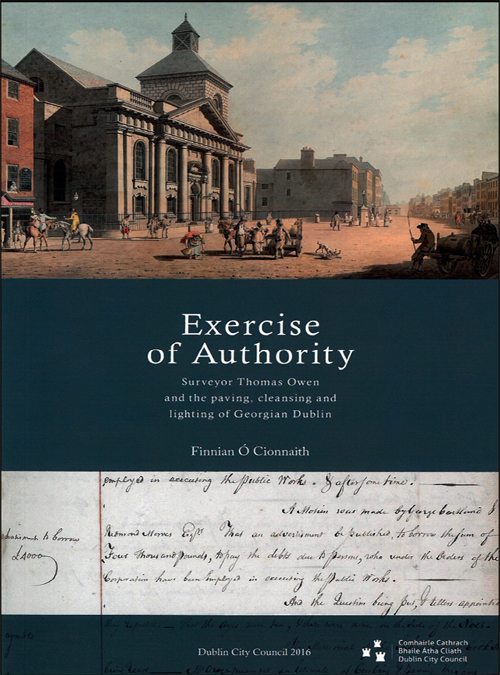

FINNIAN O’CIONNAITH
Four Courts Press, 2016
pp 156 27 col ills p/b
€19.95 ISBN: 9781907002304
Frederick O’Dwyer
Exercise of Authority follows the author’s 2012 book on the mapping of Georgian Dublin. It is full of interesting facts on the Dublin Paving Board, advising us of the source of the city’s granite paving slabs (transported by boat from Arklow) and its contribution to the provision of public lighting – increasing the number of street lamps from 2,247 to 10,200 in its first eleven years. It had surprisingly draconian powers as regards to the removal of projecting windows or shop fronts, sending tradesmen unannounced to dismantle unauthorized works, though one suspects that some of these powers in fact originated with the statute of 1729 (not mentioned here) enacted to reduce the risk of fires spreading by banning such timberwork.
Five Dublin paving boards operated in successive iterations between 1774 and 1849. Thomas Owen, a somewhat obscure architect who worked for the FitzGerald family, Dukes of Leinster, was surveyor to the first three until he was dismissed in 1787 following allegations of malpractice, but we learn little about him personally, apart from what is recorded in the board’s minute books. Tere was the usual Georgian politicval dimension to appointments, the author noting that one of the collectors of the third paving board (established in 1784) was later alleged to have been the personal butler of Sir John Blaquiere (one of the directors) and to ‘never having been in Ireland since the date of his appointment’. Owen’s offences were easily proven, with tardiness and demanding payment from contractors before certifying their accounts.
The third board, established by Blaquiere, excluded Dublin corporation from its management structure, leading to sixty-five years of bickering, not helped by the presence of a competing board of Wide Streets Commissioners and a Pipe Water Committee. In 1849, ‘with the passing of An Act for the Improvement of the City of Dublin, Dublin Corporation … fully retook control of ‘the paving, lighting, cleansing, widening and improving of the streets and thoroughfares’.
Exercise of Authority usefully examines largely unexplored aspects of the development of Georgian Dublin, complementing well-known accounts of the city’s architecture by author’s like Maurice Craig and Edward McParland.
Frederick O’Dwyer is an architect, architectural historian and town planner.



